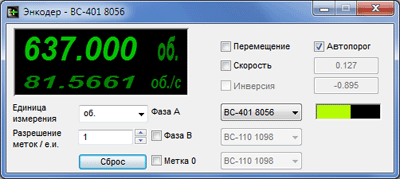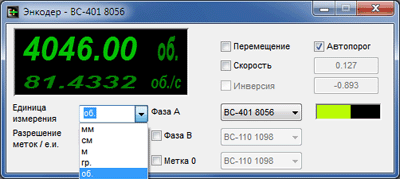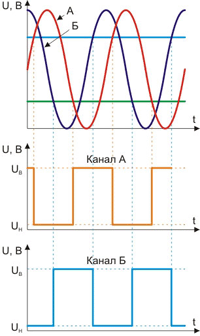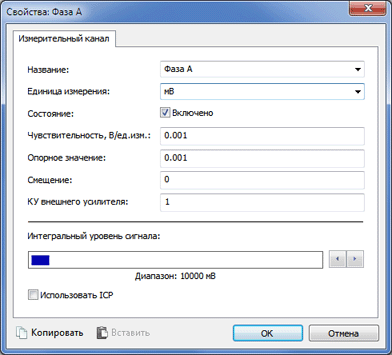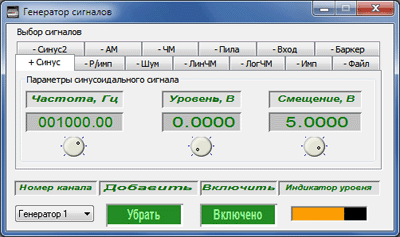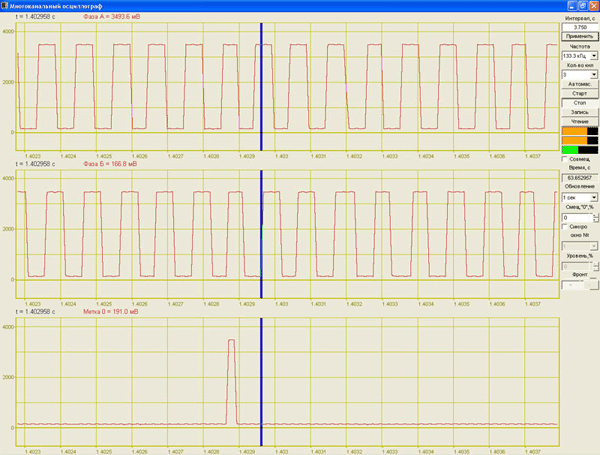The Encoder indicator displays the measured angular or linear displacement (position) and displacement velocity. Based on the task, the displacement is measured in the specified units of measurement, and the velocity – in units of measurement per second.
The resolution of an incremental encoder is determined by the number of pulses per one revolution (pulses per revolution, ppr). The necessary number of markers per the set unit of measurement is selected in the program. For instance, an incremental angular displacement encoder has 1080 markers per one revolution, and 3 markers per one degree of turn respectively. It is necessary to measure the encoder position in degrees with a precision up to one degree.
To do so, one needs to select a unit of measurement in the program – degrees, and to set 3 in the box Resolution (three markers per one degree of encoder rotation).
It is possible to specify the upper and lower signal threshold levels in the Encoder program (manually or by switching to the automatic determination). The upper and lower limits are set exclusively for false activation in course of displacement measurements. It is possible to determine the maximum and minimum signal levels for the channel, to which the encoder is connected, e.g. by starting Multichannel Oscillograph, selecting this channel and evaluating these levels on the oscillogram.
The program also provides a graphic indicator which shows the integral signal level and encoder channel congestion, in case the maximum acceptable level is exceeded.
